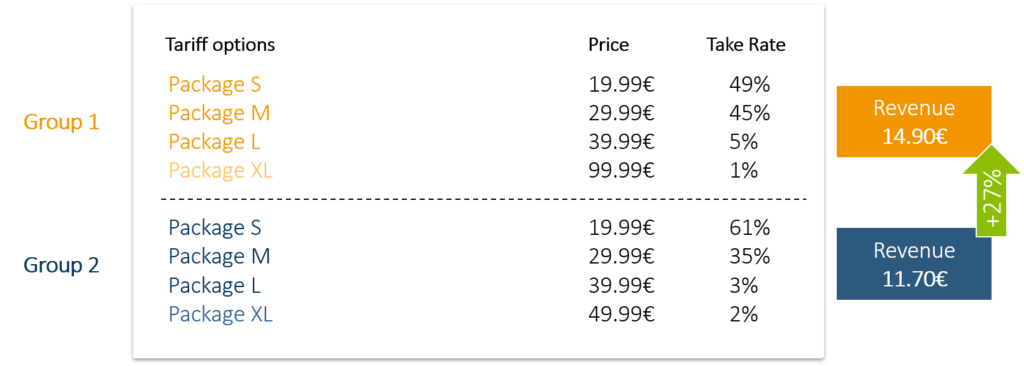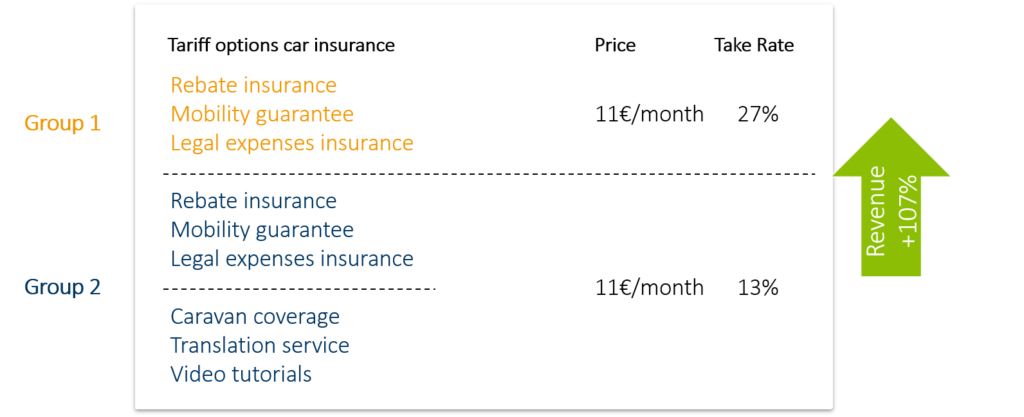How irrelevant information influences judgement and behaviour
The anchor effect is one of the best-proven behavioral economic effects. It describes that people are strongly influenced by the first piece of information, even if this information is, objectively speaking, completely irrelevant.
In one of the first experiments on the anchor effect, students were asked to write down the last digits of their social security number before estimating the value of a particular product. It turned out that higher social security numbers constitute an anchor and lead to a higher estimated price – although the two pieces of information are completely unrelated.
How irrelevant options influence decisions
In many portfolio optimization projects, we have been able to demonstrate that offers that practically no one actually buys can have a significant influence on decision-making behaviour. Because they influence how the other options are perceived.
#1 Example automotive / decoy effect:
Option 2 (rear view camera), which almost no one actually takes, is a decoy whose sole purpose is to make option 3 (package of park distance control and rear view camera) appear more attractive. If it is omitted, preferences change significantly at the expense of revenue:

#2 Example telco / anchor effect:
Option XL, which hardly anyone chooses, makes the other options seem less expensive than they actually are. If one lowers their price, more customers opt for the cheaper tariff S, because tariff M looks more expensive.

#3 Example media / quality anchor effect:
In the following example of a media offer, an anchor effect was also used. Here, however, not in the form of a very expensive option, but an option that is not very convincing in terms of content (“Sport”) despite its low price. This option also attracts customers to higher-value options: It makes the customer aware that already the little convincing option is worth 4.99€ – which makes the clearly better option “Basis” for 14.99€ even more attractive.

Why barely relevant items of your portfolio can even harm
A common misunderstanding in dealing with offer items is the assumption that each additional item provides at least some benefit – even if it is very small.
#4 Example insurance / averaging effect
The following example of an insurance product shows, however, that additional items even harm value perception. Because customers hate to pay for items they don’t need. And because the subjective value of an offer is calculated from the average rather than the sum of the partial benefits of their single elements (3 useful and 3 less useful items are less convincing than only 3 useful items):

These examples prove that customers can never evaluate offers in absolute terms, but only relative to other offers – as we have also described in our article on price acceptance. And that the model of the Homo Oeconomicus, who aims to maximize value for money, on which classic value-based pricing is based, is incorrect – see our article on price image.
For product and portfolio design, this means that an objective improvement of the offer often not only adds just little value but can even harm value perception. And that dealing with irrelevant options and items determines whether an offer is convincing or not.




